This table lists significant places and institutions with connections to Charles Joseph La Trobe.
| Site/Item | Location | Image | Description |
| England | click picture to enlarge | ||
| Addington Vale House (demolished) |
Addington, Kent View Map |
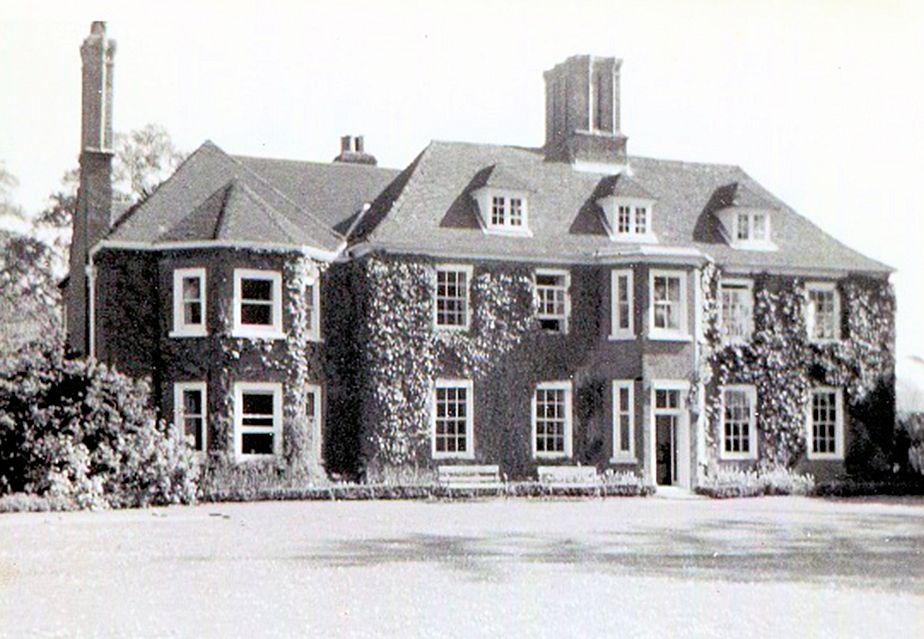 |
Originally medieval, enlarged and greatly altered in mid-19th century. The La Trobe family lived here from May 1856 to April 1857. Margaret Rose La Trobe (1856-1932) was born at ‘The Vale’. The mid-Victorian wing on the left was added after the La Trobes departed. Pictured c.1940, it was demolished in 1970. During his residency La Trobe sketched the nearby Neolithic cairn. |
| Athenaeum Club Grade I listed building |
107 Pall Mall, London Street View View Map |
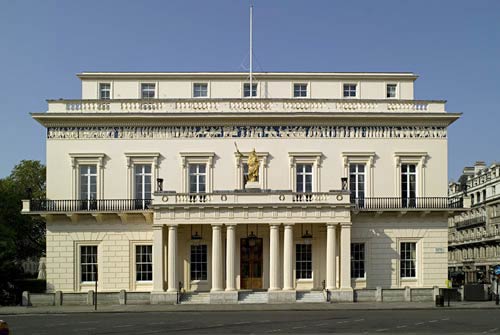 |
One of the grandest Regency clubs in London, founded 1824 and known for its Library and learned membership. The building erected in 1830, in neoclassical style and originally two-storeys, has a frieze executed in Bath stone (a copy of the famous Elgin Marbles) around the outside. La Trobe was admitted in March 1855. Engraving 1830 Article |
| Clapham House Grade II listed building |
Litlington, East Sussex View Map |
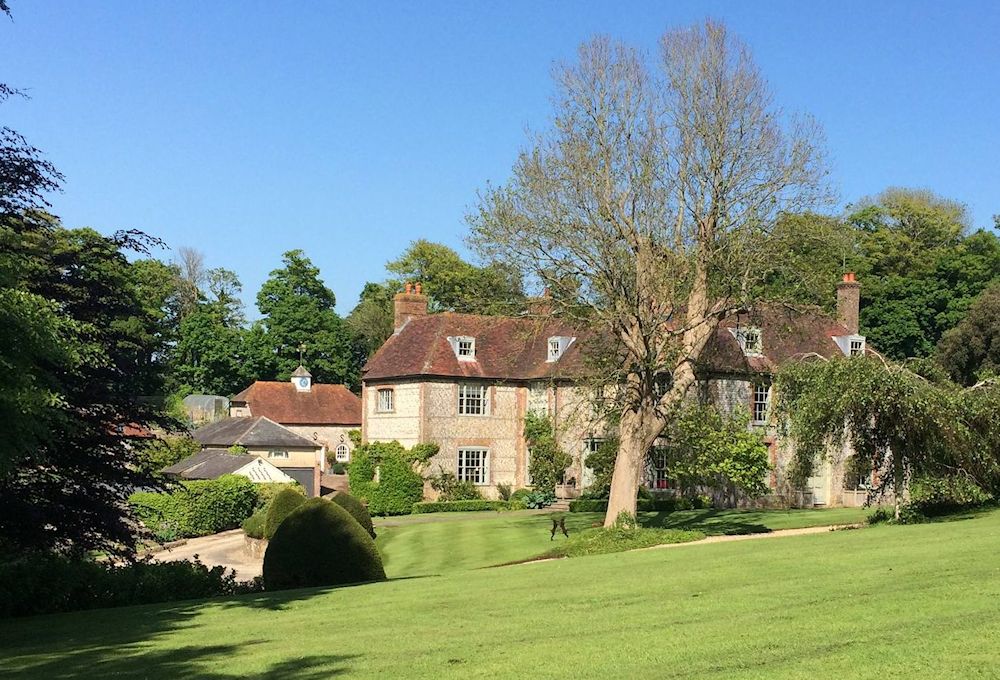 |
Elegant Georgian house with 16th century origins. Built of local flint stone and greatly extended over the next 200 years. Conveys the grandeur of the classical and warmth of the vernacular in both its interior and exterior decoration. The La Trobe family lived here from September 1867 to February 1876. Sadly, La Trobe was totally blind during this time and died 4 December 1875 at his ‘pretty retreat’. View c.1874 |
| Fairfield Moravian Settlement Neighbourhood The church, manse and two other houses are Grade II* listed buildings |
Droylsden, Manchester Street View View Map |
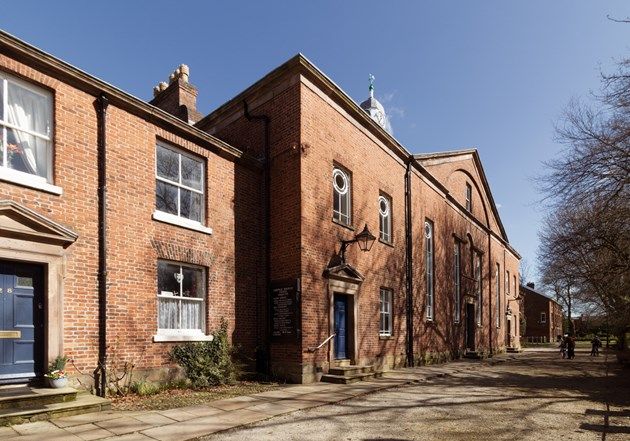 |
Founded 1785 by Rev. Benjamin La Trobe (C J La Trobe’s grandfather) as a centre for evangelistic work of the Moravian Church. His architect son, Benjamin Henry Latrobe, designed the church and some other buildings. The girls’ school continues as the Fairfield High School for Girls; the boys’ school closed in 1891. The settlement includes about 50 cottages, the historic Moravian burial ground, and retains an 18th century atmosphere. Charles Joseph La Trobe spent his later school years here, where he taught c.1820 to 1823. Etching 1818 |
| Fetter Lane Moravian Chapel Church (demolished) |
Fetter Lane, Holborn, London Street View View Map |
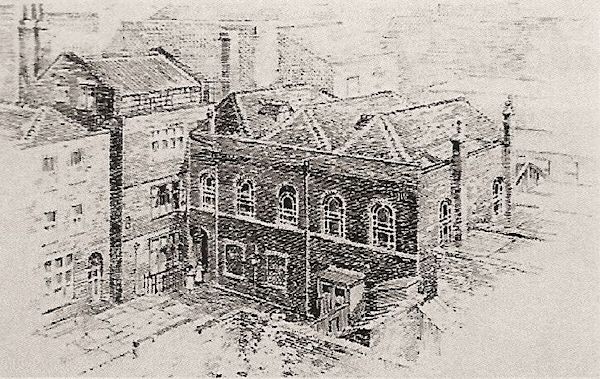 |
Founded 1742 as the first Moravian (Church of the United Brethren) chapel in Britain. Charles Joseph La Trobe was born nearby in Kirby Street, Hatton Garden, Holborn, on 20 March 1801 and was baptised in the chapel; both his grandfather and father were leaders in the Moravian Church. Like many churches in the area, St Paul’s Cathedral excepted, it was destroyed by bombing in 1941. The area was rebuilt as a commercial precinct; the congregation was re-established at Chelsea in the 1960s. Chapel Interior Mission House Plaque |
| Fulneck Moravian Settlement Neighbourhood The chapel and attached ranges to either side, including the boys’ school and girls’ school, are Grade I listed buildings |
Pudsey, Leeds, West Yorkshire Street View View Map |
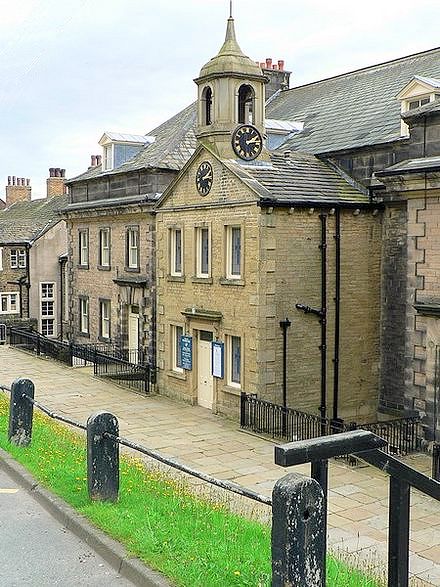 |
Founded 1743 by Count Zinzendorf of Saxony, as a centre for evangelistic work of the Moravian Church. Administered by Rev. Benjamin La Trobe for eleven years from 1757. The chapel building was erected in 1748; the boys’ school opened in 1753 and the girls’ in 1755 (the two merged in 1992). Christian Ignatius La Trobe was born and educated here, and his son Charles Joseph was a student from age 6 to 18. The settlement was virtually self-sufficient and includes many 18th-century stone houses and the historic Moravian burial ground. Engraving 1861 |
| Ightham Mote House Grade I listed building, owned by The National Trust |
Mote Road, Ivy Hatch, Sevenoaks, Kent Street View View Map |
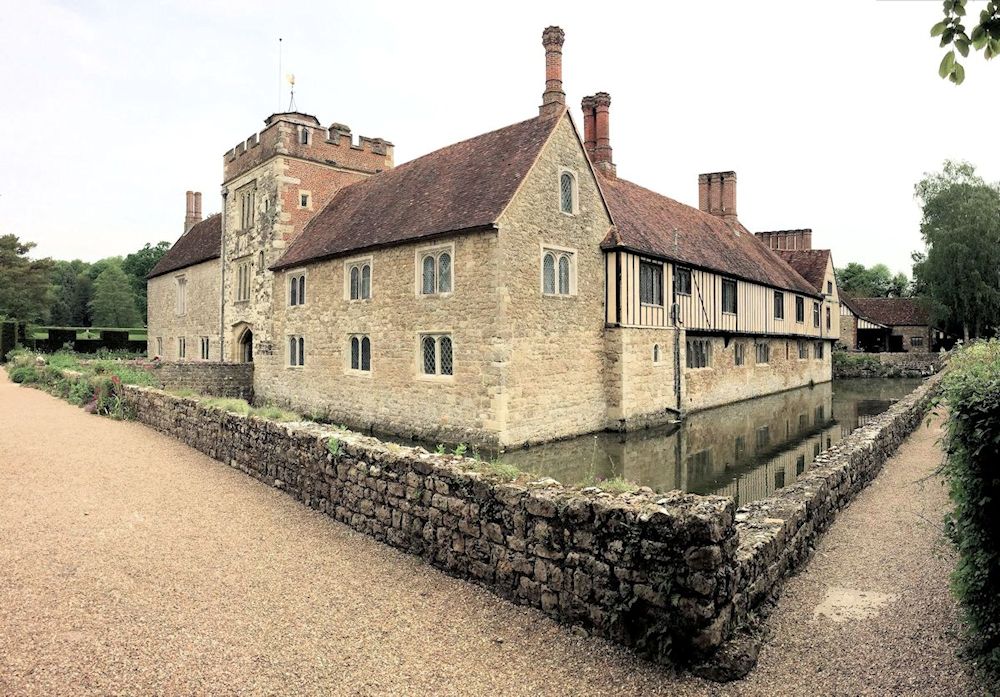 |
A 14th century moated manor house, constructed in 1340, with a number of additions and restorations made to it over the centuries. Comprising a chapel and 70 rooms arranged around a central courtyard, and owned by the Selby family from 1591 to 1889. The La Trobe family lived at ‘The Mote’ from December 1855 to May 1856, when it was only partially habitable. La Trobe made a number of sketches of its architectural features. Sketch1 Sketch2 |
| St John the Baptist Church Grade II* listed building |
Whitbourne, Herefordshire View Map |
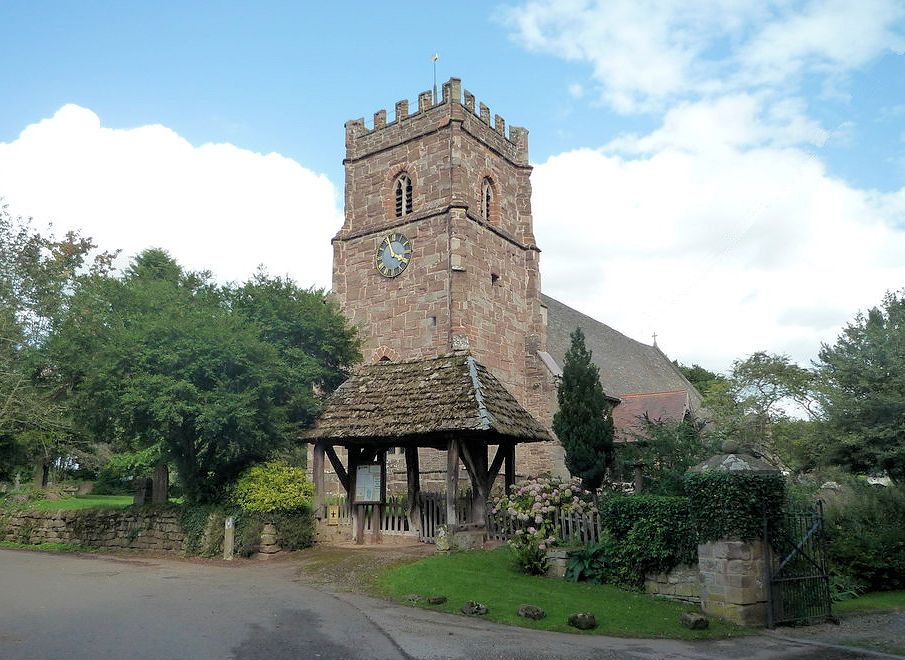 |
A 12th century stone church with a square tower housing six bells, and situated next door to Whitbourne Court, the former manor house of the Bishop of Hereford, where the La Trobe family lived from 1858 to 1866; and adjacent to a handsome rectory. In 1865 the church interior was extensively remodelled. East window |
| St Martin Church Grade II* listed building |
Ryarsh, Kent Street View View Map |
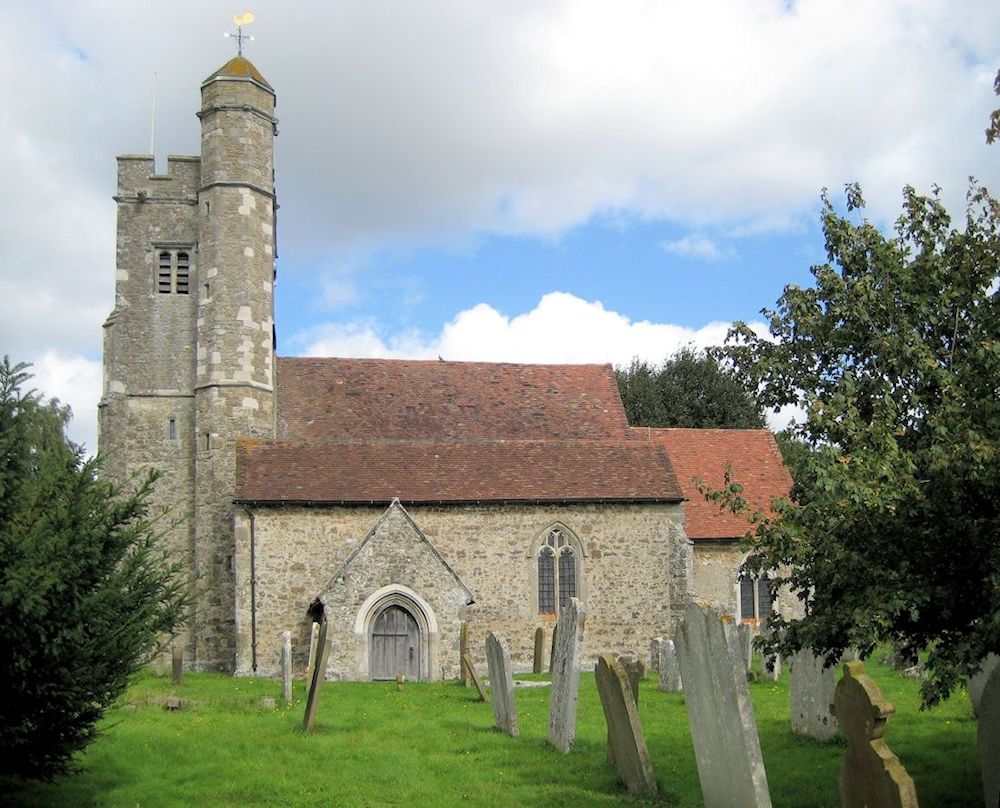 |
Church of Norman origin with a solid crenellated 15th century tower. The La Trobe family worshipped at St Martin when they lived nearby at Addington Vale, in the neighbouring village of Addington. Margaret Rose La Trobe was baptised here in October 1856. La Trobe made two sketches of the building in 1857. Sketch1 Sketch2 |
| St Michael the Archangel Church Grade I listed building |
Litlington, East Sussex Street View View Map |
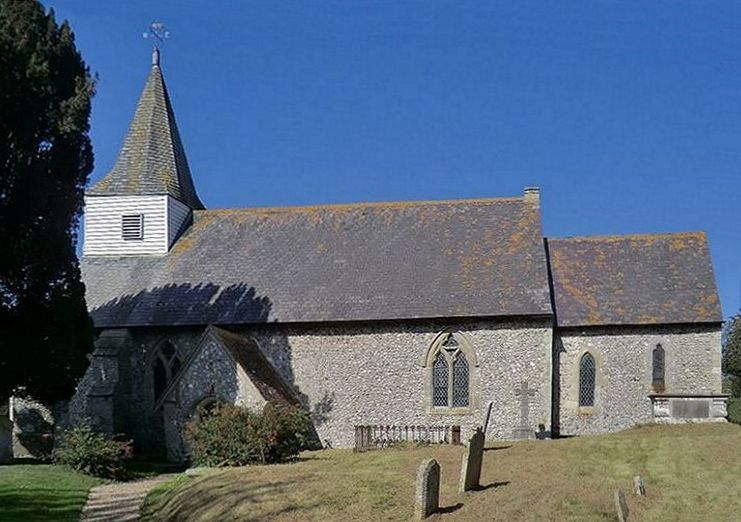 |
A 12th century church built of flint with stone facings and with a ‘broached’ wooden spirelet atop a square weatherboard tower. Some re-modelling in the 13th and 14th centuries, with three bells dating from c.1450 to 1550s. The La Trobe family worshipped at this church when they lived at Clapham House. Agnes La Trobe married Comte Pierre de Salis-Soglio here in October 1874 (Charles Perry, the first Anglican Bishop of Melbourne, officiated). La Trobe, who died 4 December 1875, is buried in the churchyard. Headstone Inscription Note |
| St Peter Church Grade I listed building |
Ightham, Kent Street View View Map |
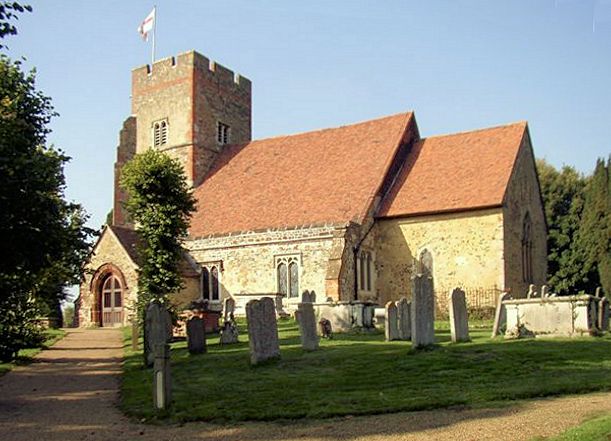 |
Church of Norman origin, largely rebuilt in 14th and 15th centuries. Contains splendid memorials to the builder of Ightham Mote, Sir Thomas Cawne, and to members of the Selby family, its later owners. The La Trobe family would have worshipped at this church while resident at ‘The Mote’, from December 1855 to May 1856. East window |
| Whitbourne Court House Grade II listed building |
Whitbourne, Herefordshire View Map |
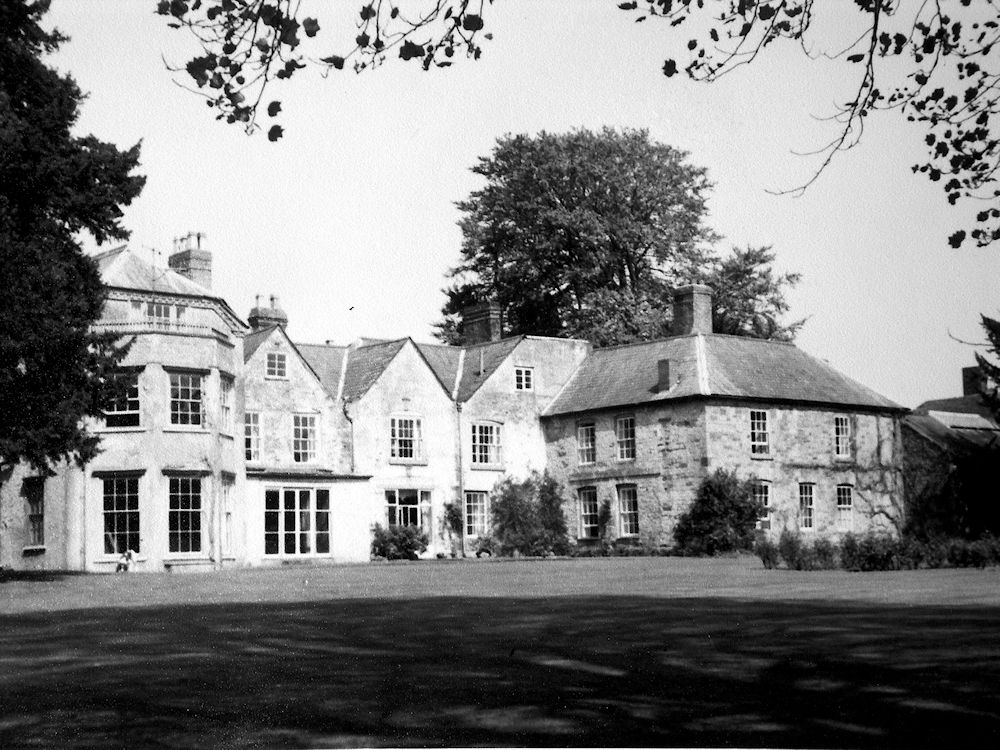 |
Site of the manor house of the Bishop of Hereford, an early Tudor building with a Queen Anne facade and a Victorian extension at the rear. The La Trobes lived at this ‘pretty retreat’ near Worcester from September 1858 to December 1866. Beyond there were water meadows and fields La Trobe sketch, Meadow |
| NOTE: Historic England (Historic Buildings and Monuments Commission for England) listed buildings: Grade I buildings are of exceptional interest, only 2.5% of listed buildings are Grade I Grade II* buildings are particularly important buildings of more than special interest; 5.8% of listed buildings are Grade II* Grade II buildings are of special interest; 91.7% of all listed buildings are in this class. |
|||
| Site/Item | Location | Image | Description | |
| Switzerland | click picture to enlarge | back to top | ||
| Neuchâtel City |
Canton of Neuchâtel Street View View Map |
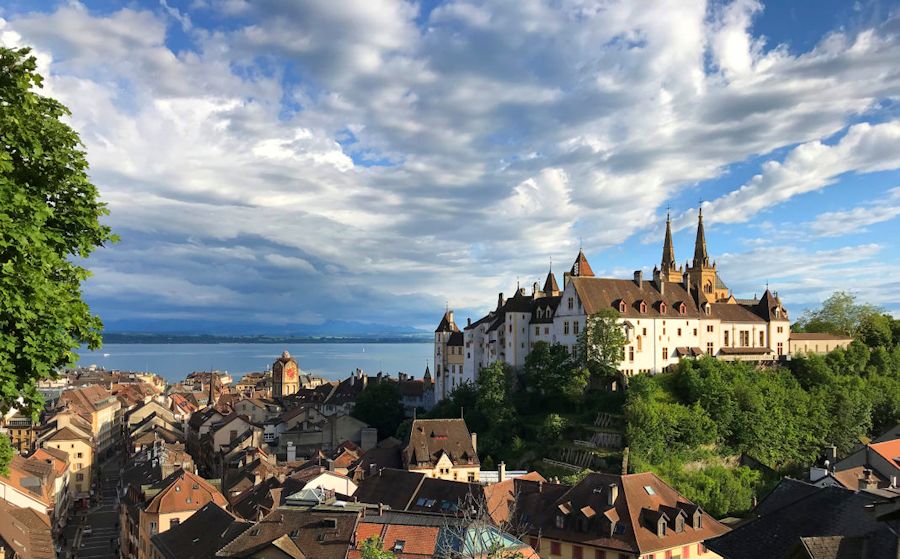 |
Nestled at the foot of the Jura mountain range on the shore of Lake Neuchâtel, 45 km west of Berne, prominent landmarks being the Castle and the Collegiate Church. La Trobe was based in Neuchâtel for two periods in the 1820s, pursuing his personal interests, travelling and writing, and later returned many times until the end of his life. In the 1820s he had lodgings near the Town Hall. | |
| Chapelle de l’Ermitage Memorial Chapel |
19 Rue Georges- August Matile, Neuchâtel Street View View Map |
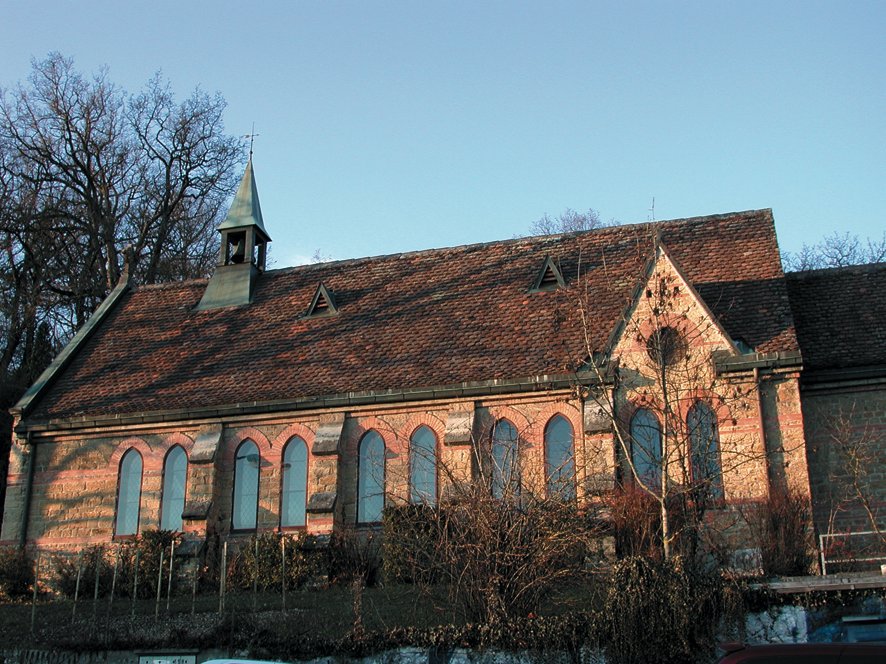 |
Chapel built in memory of La Trobe by his second wife, Rose de Meuron (née de Montmollin) in 1878. It also commemorates the memory of their daughter, Isabelle, who died in 1874, aged 16. Memorial plaque. Memorial window (central light depicting La Trobe, artist Alan Sumner, commissioned by the Government of Victoria 1978). The chapel is now a church within the Reformed Church of the Canton of Neuchâtel. | |
| Château de Grandson House |
Place du Château 12, Grandson Street View View Map |
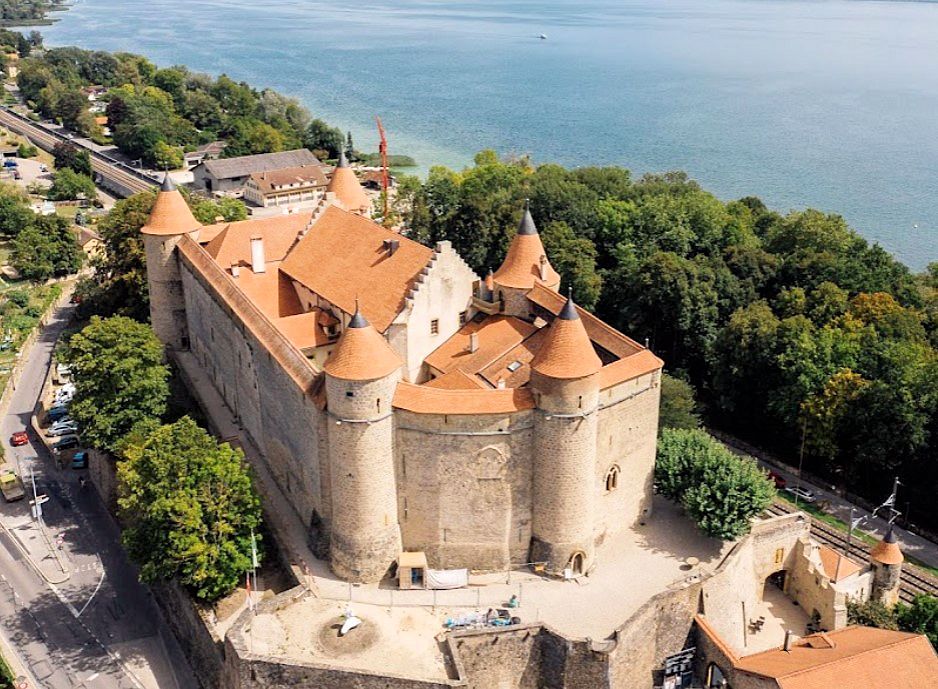 |
Medieval castle overlooking Lake Neuchâtel. From 1901 to 1956 the home of La Trobe’s granddaughter, Comtesse Elisabeth Sophie de Blonay. She was custodian of a significant collection of her grandfather’s manuscripts and artefacts, which were subsequently acquired by State Library Victoria; and the National Gallery of Victoria, in the case of the testimonial candelabrum centrepiece presented to La Trobe by the people of Victoria in 1855. article | |
| Château de Greng House |
Canton of Fribourg, beside Lake Morat View Map |
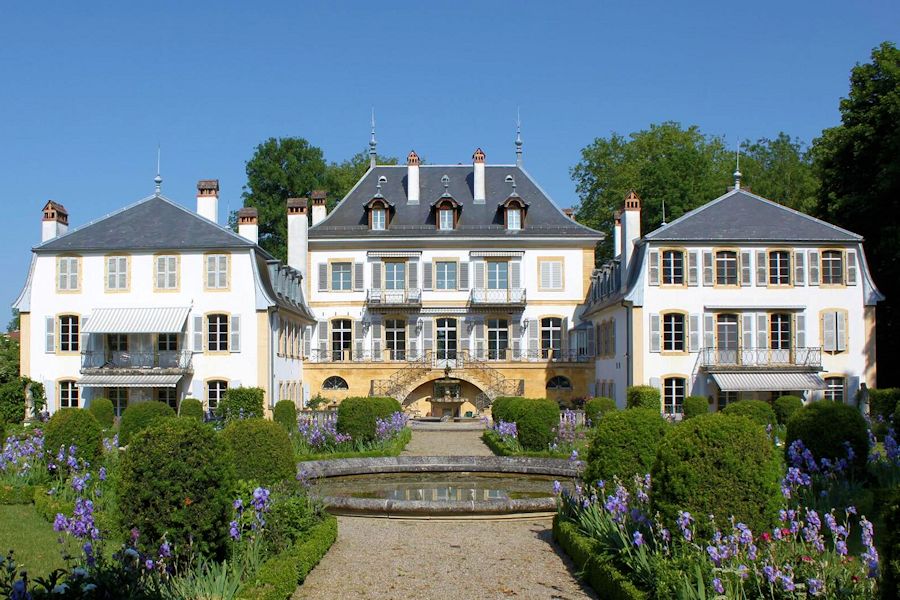 |
Beautiful château of Sophie’s uncle, Comte Frédéric de Pourtalès and aunt the Comtesse, with whom La Trobe corresponded regularly over the years. He first visited in 1831 and later became mentor to their son, Albert, on a two-year journey to North America. Isabelle La Trobe (1858-1874) was born here. Pourtalès house Neuchâtel – street view | |
| Château Oberhofen House |
Oberhofen, Lake Thun Street View View Map |
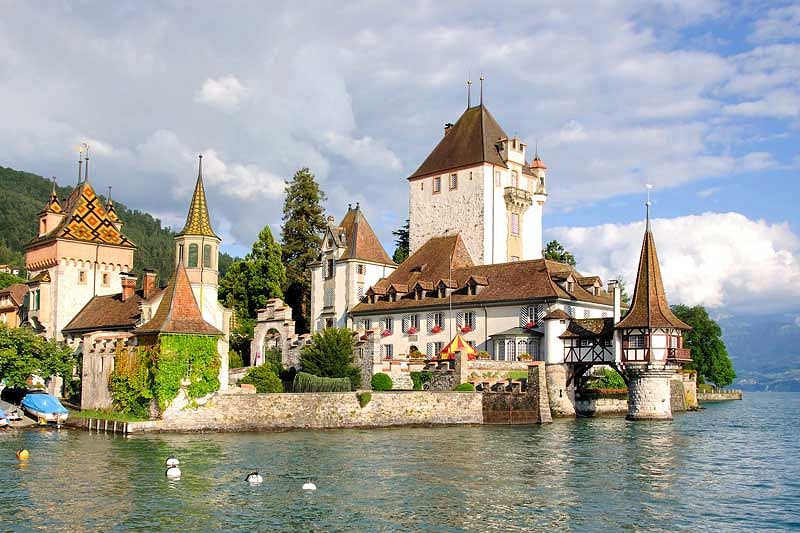 |
In 1849-52 the Pourtalès family renovated and expanded the château to its present appearance. Agnes La Trobe visited here several times before her mother returned to Switzerland, and Charles Joseph La Trobe stayed here on his many visits to Switzerland after Sophie’s death. La Trobe sketch, 1857 | |
| Collegiate Church | 3 Rue de la Collégiale, Neuchâtel Street View View Map |
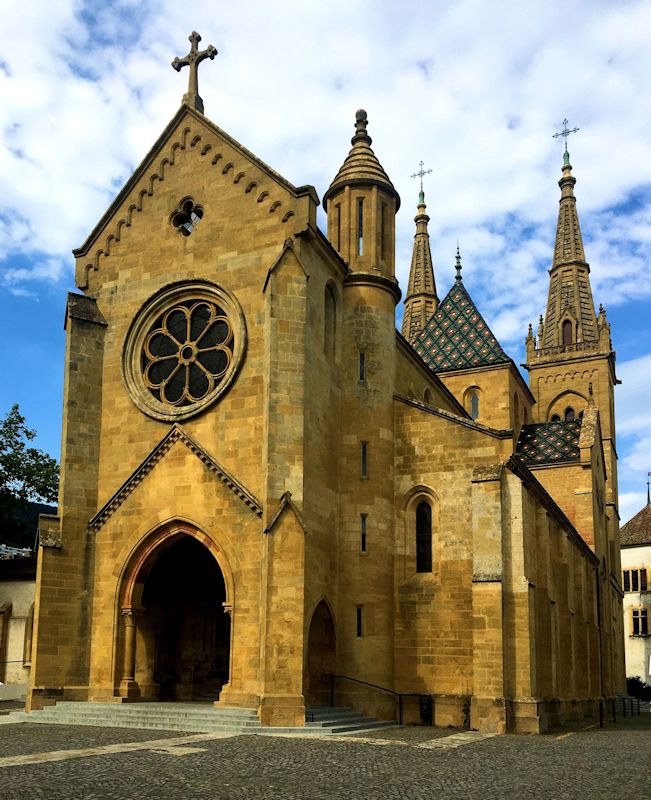 |
The Collegiate Church dating from the late 12th century sits prominently beside the Castle above the town. In flamboyant yellow limestone extensively restored, it blends Gothic, Rhineland Romanesque and Burgundian styles characterised by glazed tiles on the roof. La Trobe worshipped at this church, which has a fine interior. It is part of the Reformed Church of the Canton of Neuchâtel. Another view | |
| Jolimont House |
Erlach (Cerlier) Street View View Map |
In September 1835, Charles Joseph La Trobe and Sophie de Montmollin were married at the British Legation in Berne. They spent their honeymoon at Jolimont on the Jolimont hill above Lake Bienne. It was the property of Sophie’s uncle, Comte Frédéric de Pourtalès. In 1854 La Trobe sketched the nearby Schloss Erlach, Château de Cerlier. | ||
| Kirchgemeinde Parish Church |
Erlenbach, Simmental Street View View Map |
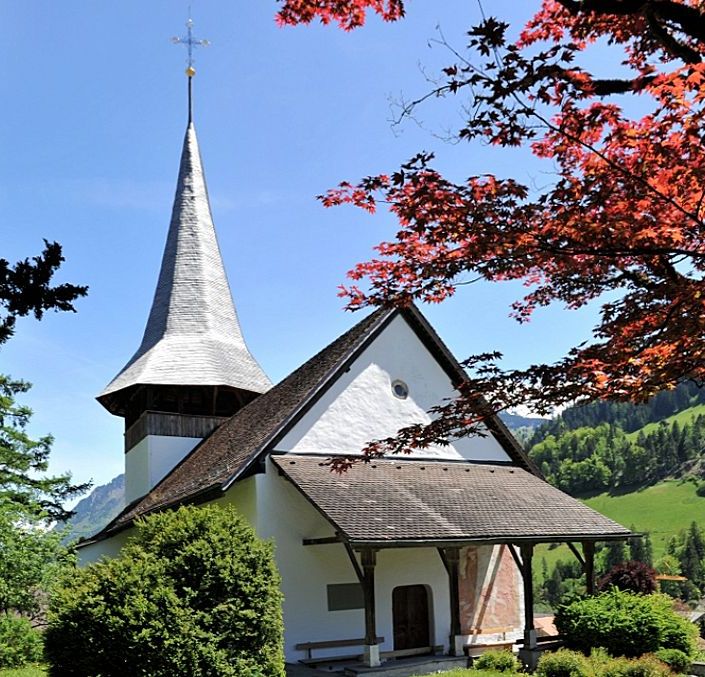 |
The parsonage at Erlenbach, a few paces above the church, is where La Trobe frequently stayed with his ‘flower-loving friends’, the Studers. He shared with Rev. Studer an enthusiasm for walking in the mountains and for botany. La Trobe departed on his summer ‘rambles’ from this idyllic setting, view of 1822, and made sketches of the surrounding scenery. He later spent part of his honeymoon here. Sketch1, Sketch2 | |
| La Borcarderie House |
Valangin | Country estate of Sophie’s father, Comte Frédéric Auguste de Montmollin. It is here where La Trobe nervously sought permission to marry Sophie, and where some years later daughters Eleanora and Cécile spent time while their ailing mother remained in the Montmollin family home in Neuchâtel. La Trobe sketch, 1854 | ||
| La Rochette House |
Avenue de la Gare Neuchâtel Street View View Map |
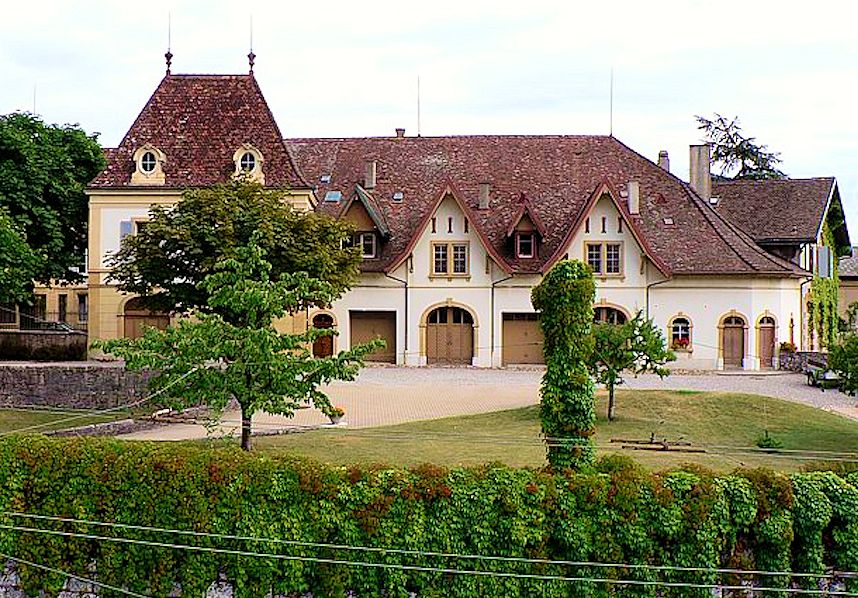 |
Home of the de Meuron family. The widowed Rose de Meuron (née de Montmillon) lived here until she married Charles Joseph La Trobe in 1855. Agnes La Trobe (1837-1916) lived here when she went back to Switzerland in 1845 for her education, and for a short time later in life with her husband Comte Peter de Salis. |
|
| L’Ermitage House |
40 Rue Charles-Knapp, Neuchâtel Street View View Map |
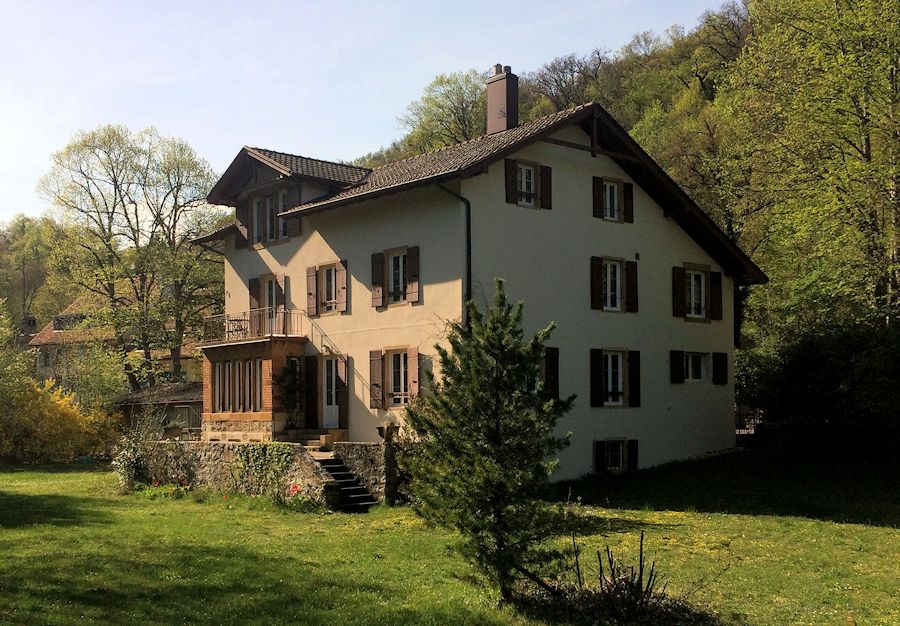 |
When Rose La Trobe (de Meuron née de Montmollin) returned to Switzerland after Charles Joseph La Trobe died, she lived in this house that she had previously purchased. Part of the land was used to build the Chapelle de l’Ermitage to commemorate La Trobe and their daughter Isabelle. The house later became known as Foyer de l’Ermitage. | |
| Maison Montmollin House |
8 Place de Halles, Neuchâtel Street View View Map |
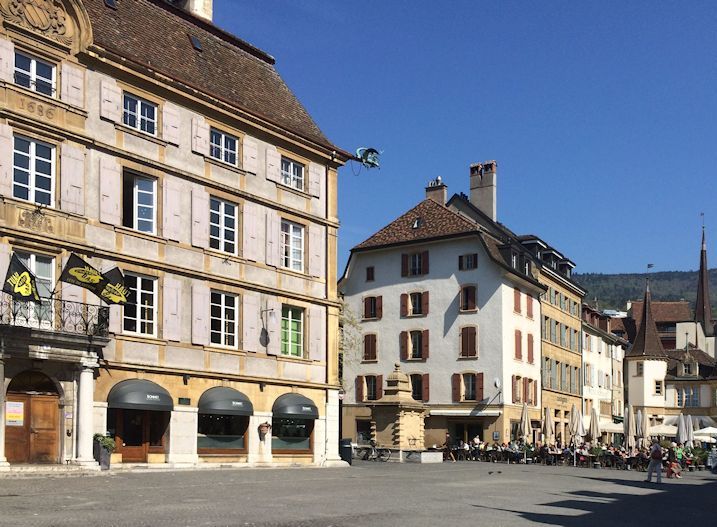 |
This was Sophie’s family home in Neuchâtel. Charles and Sophie had an apartment in the house after their marriage. Agnes La Trobe (1837-1916) was born in a front room overlooking the market square (postcard) and would have spent time here when she went back to Switzerland in 1845 for her education. Sophie returned here in 1853 and died in 1854. Another view | |
| Montmirail House |
Montmirail, La Tène Street View View Map |
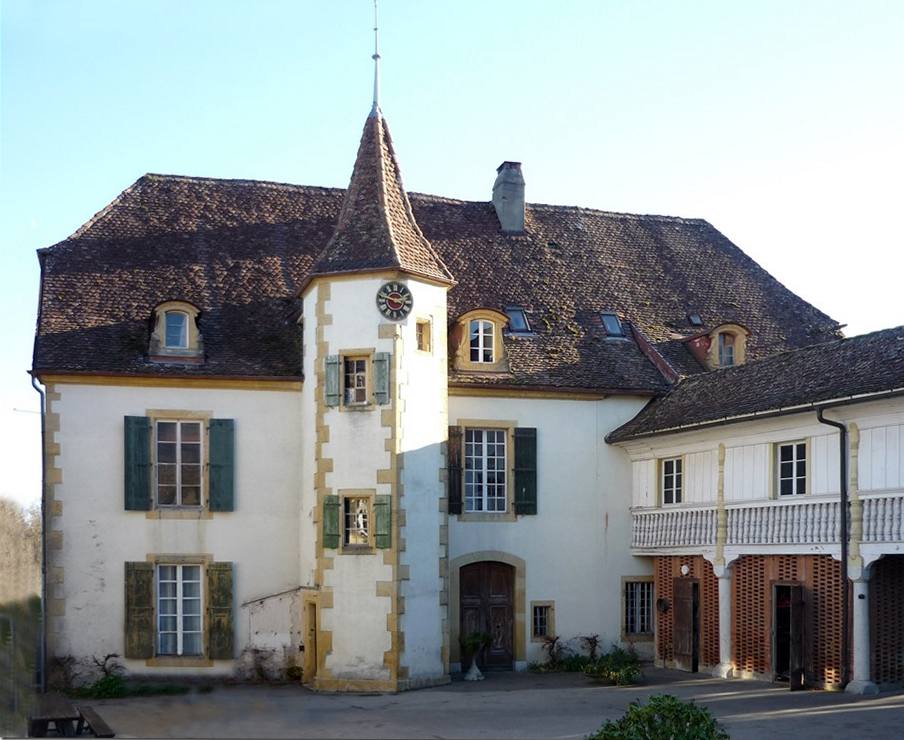 |
Chateau that for many years was the site of a Moravian boarding school for girls. During his sojourn at nearby Neuchâtel in the 1820s, La Trobe walked to Montmirail on Sunday afternoons to visit his friend the principal of the school, taking in the glorious view of the Alps during his eight-kilometre journey. Another view, 1832 |
|
| MAPS: Map of Neuchâtel environs Map of Neuchâtel |
||||
Compiled by Helen Armstrong, presentation by John Botham
Comments and pictures to info09@latrobesociety.org.au
